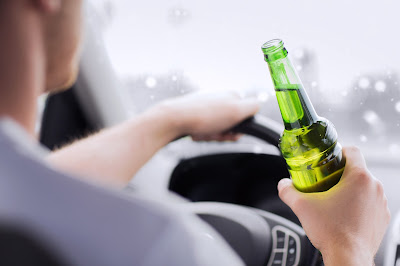Drink driving in UK versus Norway: Drink driving limits
 |
Drink driving limits vary not only between countries
but also between the various parts of the UK
|
In part 3 of this four-part series comparing the drink driving law in Norway with that here in the UK following the driving conviction
of Halfords finance director, Jonny Mason, we turn our attention to the
question of the drink driving limit. In other words, how much alcohol can you
have in your system and still be allowed to drive?
In Part 1 we looked at whether a golf buggy could be a motor vehicle here in the UK and concluded that it could not unless it was modified.
In Part 2 we considered whether a person could commit a drink driving offence on a private golf resort and concluded that while it is possible, it seems
unlikely that drink driving on this resort (if it were in the UK) would be a
crime. Now, we ask whether Mr Mason would have committed a crime if he had
driven a car on a road with the amount of alcohol in his system that he had in
Norway.
Throughout these posts, I’ve referred to “UK law”. That’s a
bit misleading because English and Welsh law is different to Scottish law, but
the drink driving law applies equally to both except in one important respect:
the drink driving limit. In Scotland, the limit is 50 mg of alcohol per 100 ml
of blood (22 mg per 100 ml of breath). In England and Wales, the limit is 80 mg
of alcohol per 100 ml of blood (35 mg per 100ml of breath).
As a child, I was told various things about how much you can
drink before you drive (interestingly I don’t recall ever being told not to
drink anything before driving until I was much older). The (mis)information I
remember most clearly was that you can drink two or three pints of beer before
driving. Two pints was the most often cited figure, but I do remember going to
the pub with my science teacher who was about to drive home when we finished
drinking insisting that three pints was completely safe and would not put
anybody over the limit! He was a biologist by training and should have known
better. I was also told that eating before drinking will reduce the alcohol
level.
In fact, the amount of alcohol you can consume before
reaching the drink driving limit varies from person to person and eating food
will have no effect on you blood-alcohol level. Food may make you feel less
intoxicated but it does nothing to alter the amount of alcohol entering your
body and thus the reading you’ll provide should the police ever test you.
Generally speaking, men can consume more alcohol than a
woman and fatter people can consume more than muscular people without exceeding
the drink driving limit. This is because the alcohol level in your body is a
function of the amount of water in your body and fat contains more water than
muscle. While you can estimate the amount of alcohol you can consume you cannot
be accurate, which is why the best advice is not to drink any alcohol if you
plan to drive.
So, what was Mr Mason’s alcohol level? None of the reports I
have read set out his alcohol level, but we can estimate it because the reports
do say he was double the drink driving limit. In England that would mean he had
around 160 mg in 100 ml of blood. But, a little research reveals that the drink
driving limit in Norway is much lower. There the limit is 20 mg of alcohol in
100 ml of blood. That means that double the limit is 40 mgs.
At 40 mg of alcohol in 100 ml of blood, Mr Mason would NOT
have exceeded the drink driving limit in England and Wales nor even the lower
limit in Scotland. So, had he driven a car (not a golf buggy) on a road (not a
private golf resort) he would not have been committing an offence anywhere in
the UK.
In the final part, we will pretend that the prosecution
could secure a conviction and look at what sentence would be imposed.


Comments
Post a Comment